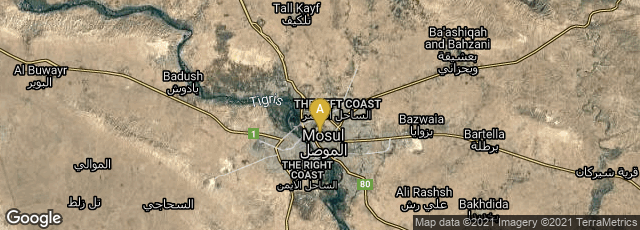

A: The Left Coast, Mosul, Nineveh Governorate, Iraq
Detail from the Royal Lion Hunt of Ashurbanipal in the British Museum. This depicts Ashurbanipal II.
In an effort to collect all knowledge, Ashurbanipal, King of Assyria from 668 to 627 BCE, collected a library at his capital city Nineveh, containing, it has been estimated, 20,000–30,000 clay tablets written in cuneiform script.
"Ashurbanipal was one of the few Assyrian kings to have been trained in the scribal arts—by one Balasî , a senior royal scholar " (Robson, "The Clay Tablet Book," Eliot & Rose (eds) A Companion to the History of the Book [2007] 75).
"Recent cataloguing in the British Museum has enumerated some 3,700 scholarly tablets from Ashurbanipal's Library written in Babylonian script and dialect—about 13 percent of the entire library. Ashurbanipal's obsession with Babylonian books did not, then, completely overwhelm indigenous production, but he did view them as highly valuable cultural capital; their forced removal to Nineveh undermined Babylonian claims to the intellectual heritage of the region and thus pretensions to political hegemony, while reinforcing Ashurbanipal's own self-image as guardian of Mesopotamian culture and power" (Robson, op. cit., 77).
The library was discovered at Nineveh by archaeologist/explorer Austen Henry Layard in 1849, and is considered the earliest systematically collected library, as distinct from a government archive. Clay tablets such as those in Ashburbanipal's library, or other cuneiform archives, were not typically fired in kilns for preservation. However, it is thought that a significant portion of Ashurbanipal's library survived to the present because the clay tablets were baked in fires set during the Median sack of Nineveh in 612 CE. Layard published an account of his discovery of the library in Discoveries in the Ruins of Nineveh and Babylon (2 vols., 1853) from which Clark, The Care of Books, page 2, reproduced the floor-plan of Ashurbanipal's record room:
"The tablets have been sorted under the following heads: History; Law; Science; Magic; Dogma; Legends: and it has been shewn (1) that there was a special functionary to take charge of them; (2) that they were arranged in series, with special precautions for keeping the tablets forming a particular series in their proper sequence; (3) that there was a general catalogue and probably a class-catalogue as well" (Clark, p. 4).
To deter thieves, Ashurbanipal had the following curse written on many or all of his tablets. It is the earliest known book curse, and because it was also a means of identifying his property it might also be considered an early ex-libris, albeit a verbose one:
“I have transcribed upon tablets the noble products of the work of the scribe which none of the kings who have gone before me had learned, together with the wisdom of Nabu insofar as it existeth [in writing]. I have arranged them in classes, I have revised them and I have placed them in my palace, that I, even I, the ruler who knoweth the light of Ashur, the king of the gods, may read them. Whosoever shall carry off this tablet, or shall inscribe his name on it, side by side with mine own, may Ashur and Belit overthrow him in wrath and anger, and may they destroy his name and posterity in the land" (Drogin, Anathema! [1983] 52-53).
In 1872 English Assyriologist George Smith of the British Museum edited the surviving records of Ashurbanipal's life on clay cylinders and tablets and issued cuneiform transcriptions with interlinear translations as History of Assurbanipal, Translated from the Cuneiform Inscriptions (1872).
The surviving portion of Ashurbanipal's library includes 660 cuneiform tablets that concern medicine. These were published in facsimile for the first time, but without translation, by Reginald C. Thompson as Assyrian Medical Texts. From the Originals in the British Museum (1923).
Menant, La bibliothèque du palais de Ninive (1880).
(This entry was last revised on 12-27-2014.)